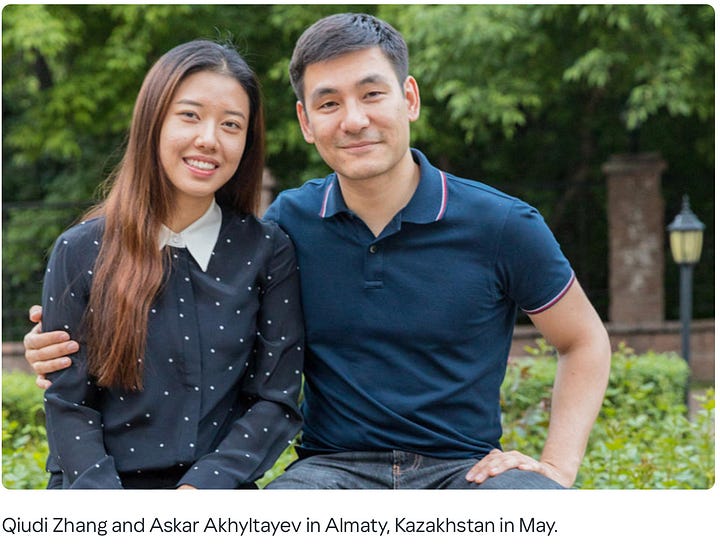A U.S. Eurasian Trade, Defense & Communication Policy shift to balance power struggles over the Ukrainian war
The Russian Federation’s unwavering stance against ceasefire agreements with Ukraine furthers exigent circumstances for the United States to allocate substantial and dynamic resources to Central Asia.
Executive Takeaways:
U.S. Strategy Focus: Expand beyond Ukraine to address threats from Russia and China as a unified front in Central Asia.
Central Asia Engagement: Substantial economic investment and heightened military presence to pressure Russia and indirectly influence China.
Cultural Ties in Communication Strategy: A collective regional identity approach is crucial for garnering support, avoiding ethnocentric approaches.
Technological Advantage: Global social media and machine translation advancements can enhance the success of an Eurasian strategy.
By directing U.S. business investment and bolstering U.S. military forces in Central Asia, the Russian Federation will be compelled to divert its attention between its western and eastern borders. Moreover, a more prominent U.S. presence in the region will disrupt the People’s Republic of China’s expansion of the Belt and Road Initiative, potentially prompting the Chinese government to exert pressure on the Russian government to reconsider its rigid stance on U.S. ceasefire proposals to end the war in Ukraine. In tandem with this, the proposed imposition of high tariffs on Russian oil exports, which could extend to lumber and diamonds, as well as Chinese exports, will contribute to the resolution of stabilizing Ukraine.
Several European nations are reevaluating their defense capabilities in 2025, acknowledging the resolve of Vladimir Putin and his party United Russia to maintain control over Ukraine. For Russia, it is also a matter of potentially losing Belarus and Moldova to the so-called “NATO Expansion”, which in Russian terms is a violation of Cold War-era agreements. Due to the Kremlin’s commitment to maintain these grandfathered conditions, it is crucial for European nations to devise financial solutions to bolster their defense. In the context of Ukraine, President Zelenskyy and the Ukrainian people urgently require European defense support.
While the U.S. plays a crucial role in Ukraine’s independence and stability against Russian aggression, the American strategy for economic prosperity and defense posture should expand to address the growing threats posed by Russia and China as one. A significant part of the Eurasian strategy should evolve beyond consultations and relationship development towards business development, and enhanced defense training, and cooperation in Central Asian states like Uzbekistan, Kazakhstan, Kyrgyzstan, and Tajikistan. A cooperation for which these nations already recognize the value through a recent border agreement in pursuit of their individual prosperity from Russia’s dominion.
Russian President Putin is fully committed to maintaining a chronically weakened Ukrainian state that excludes President Zelenskyy, which is undoubtedly an unpublished aspect of Russia’s “unaddressed” issues in ceasefire disagreements. While there are various tactics to leverage Russia to make concessions, such as imposing harsh sanctions on oil, a shift in strategy concerning Eurasia is essential.
Principally, a substantial economic investment by the U.S. and NATO Allies in Central Asia, coupled with a heightened military presence, would not only directly pressure Russia on its territory but also indirectly pressure Russia through China. A visible and substantial presence in Central Asia would hinder China’s autonomy in its Belt and Road Initiative, or at a minimum retain a U.S. physical presence in the development of the “new Silk Road”. This strategy would compel Russia to curtail its military buildup in the west and simultaneously assist the U.S. in pressuring China to de-escalate tensions with Russia.
It is crucial to acknowledge a cultural element that cannot be ignored: the Eurasian ties in Central Asia to Turkic culture, which gives Turkey a role to play as a member of NATO, assuming Turkey maintains its internal stability. There is the cultural heritage of the Russian language and bilingualism among peoples of Central Asian due to the former Soviet Union. While several Central Asian nations have moved toward cultural sovereignty from Russia, there is still a popular culture link to Russia and the Russian people as well as China.




The communication aspect of the Eurasian trade and defense strategy for Central Asia must be grounded in the collective identity specific to the region. By adopting this approach, it is more likely to garner support from these nations, and its people, rather than resorting to outdated ethnocentric approaches that inadvertently fuel confrontational nationalism in the region. A positive aspect to the modern era of technology, which helps address the ambitions of such a strategy, are global social media use and the advancement of machine translation, which will further the success of a reshaped U.S. Eurasian strategy.
The nuanced level of AI-driven translation at scale, necessitated for such an ambitious Eurasian trade, defense, and communication strategy, is in the realm of the possible, in part owing to the advancement of Large Language Modeling. There is an opportunity to leverage technology to further the success of an Eurasian approach to Russia, which was missing in the initial and middle stages of the Ukrainian War of Independence. A lesson now learned, which can be repositioned toward Central Asia to benefit not only Ukraine, but the U.S.’s interests in Eurasia and Asia.
~E




This news just broke!
https://eurasianet.org/us-strikes-mineral-deals-with-uzbekistan-tashkent-report